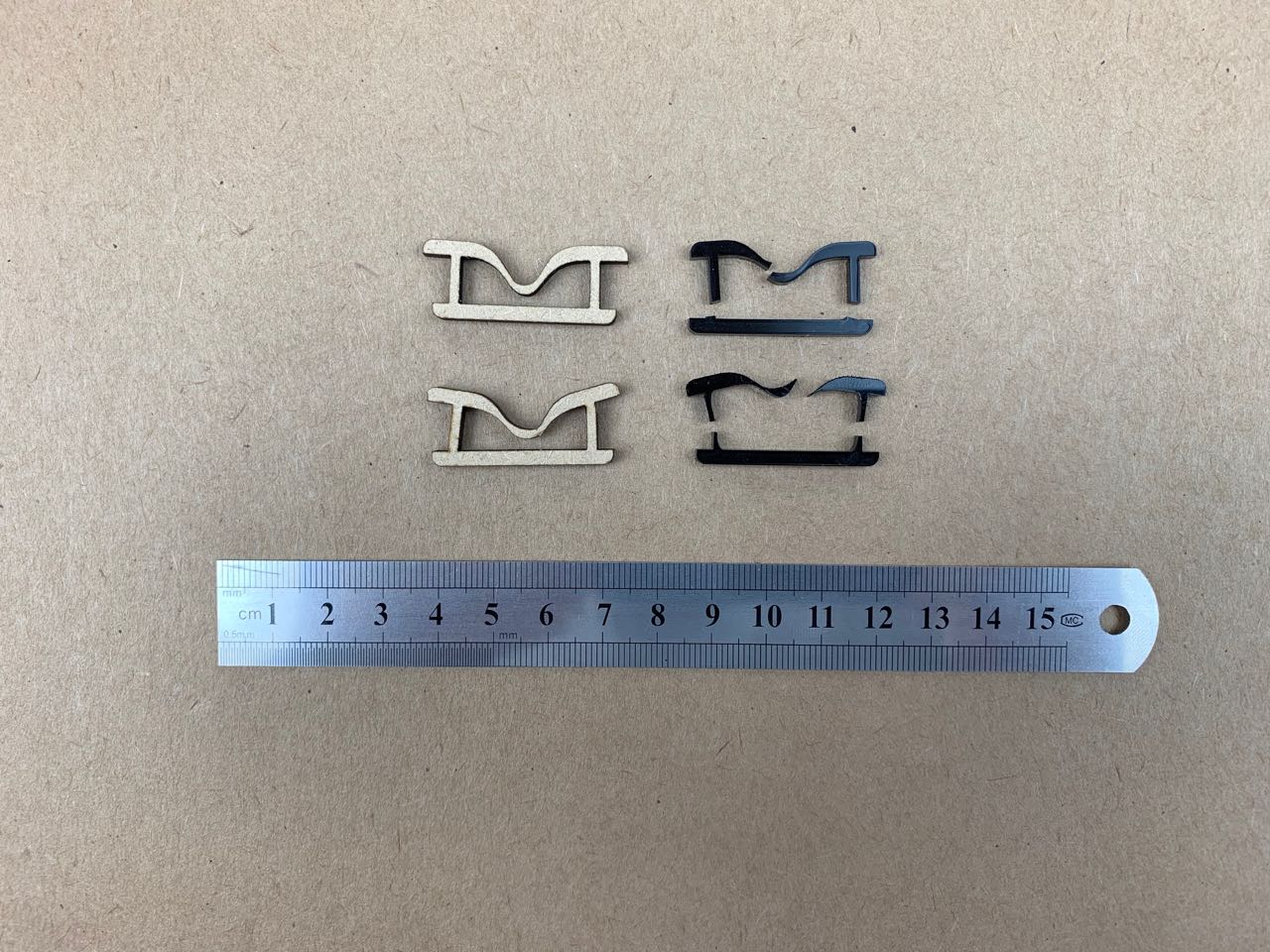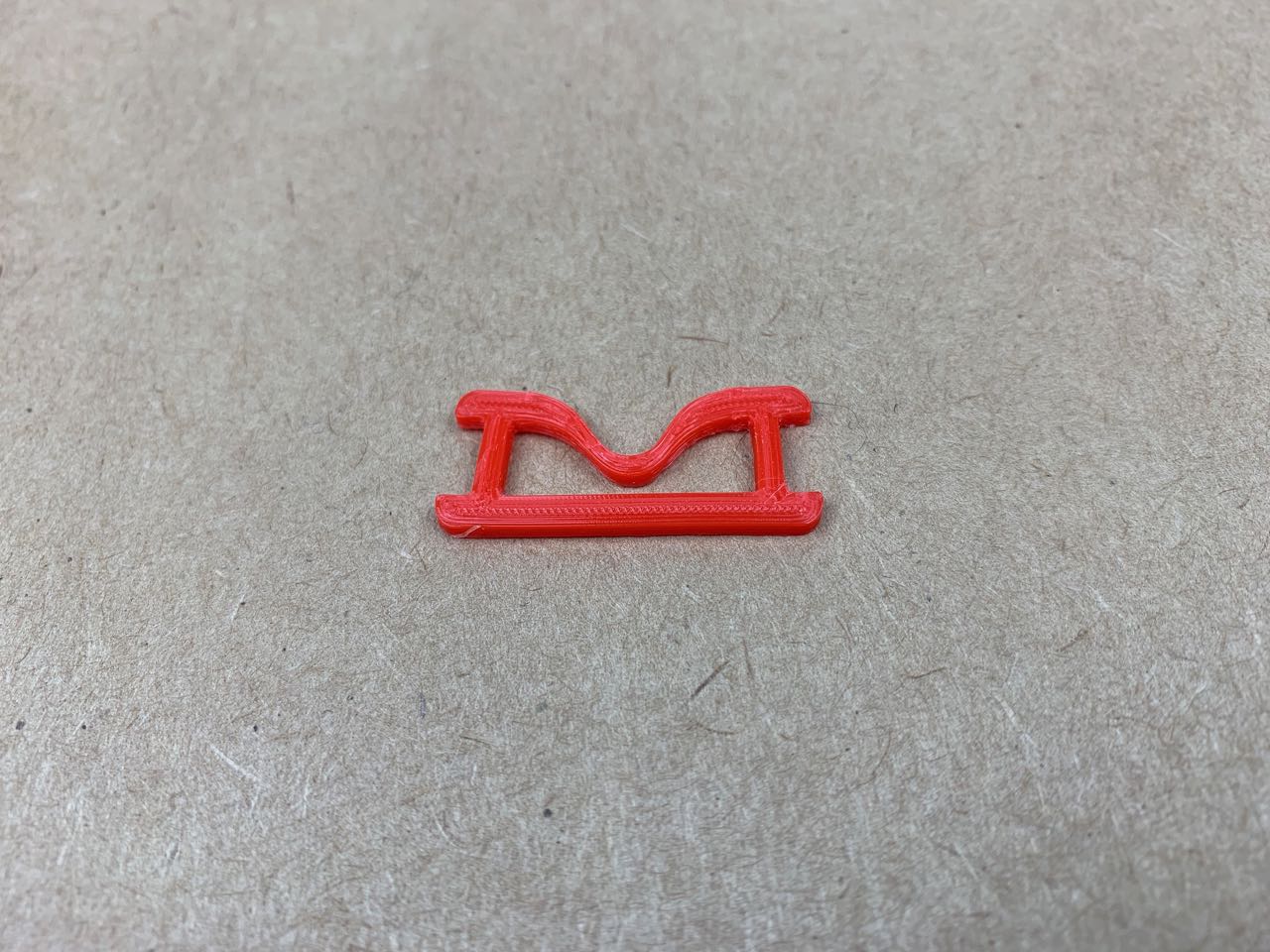soft-fabrication
Joining — Flexure Links
In commercial fabric products like coats and rucksacks, plastic flexible clips are common. They often use a flexure to allow the clip to deform reliably.
I’m trying to make some simple links with a flexure to allow easy insertion whilst keeping a secure fit.
In these early experiments I’ve laser cut 3 mm MDF and acrylic. In the first MDF version (top left), the central flexure is too deep, so hits the lower bar when the side bars are compressed only a small amount.
The second version (bottom left) addresses this, but the MDF tears when flexed.
I switched to acrylic, but is too brittle in this design. The first version (top right) snapped instantly; the second version (bottom right) which has thinner side posts and central flexure was a little more flexible, but still snapped too quickly.
By comparison, a commercial injection-moulded ABS(?) flexure will last for many thousands of uses.

I tried a quick test 3D-printing the same design in PLA. It is certainly more flexile than MDF or acrylic, but I suspect the behaviour of the flexure will very considerably depending on print density and infill patterns, so more tests are needed here.
